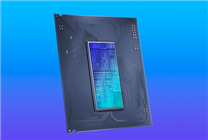Trump Considers Tariffs on Foreign Electronic Devices Based on Chip Count
Summary:
- The Trump administration is exploring tariffs on foreign electronic devices tied to the number of chips in each device.
- Proposals include tariffs of up to 25% on chip-related components and 15% on electronic products from the EU and Japan.
- The initiative aims to boost domestic semiconductor production and reduce reliance on foreign imports.
In a notable shift in trade policy, former President Donald Trump is reportedly contemplating a significant decision to impose tariffs on foreign electronic devices, closely tied to the semiconductor industry. Sources indicate that these tariffs would be based on the chip count within each imported device, a move seen as an effort to bolster U.S. national and economic security.
According to insiders, the U.S. Department of Commerce is evaluating a tariff structure that would apply a specific percentage of the value derived from the chips present in imported products. This approach aims to deter reliance on semiconductor imports from foreign manufacturing giants, reinforcing the administration’s stance on domestic production.
White House spokesperson Kush Desai emphasized the necessity of this move, stating, “The United States cannot rely on foreign imports on semiconductor products that are crucial to our national and economic security.” This statement underlines the administration’s intent to foster domestic semiconductor manufacturing capabilities, which have been a growing concern amidst global supply chain vulnerabilities.
In a previous announcement made in August, Trump mentioned the possibility of enacting tariffs close to 100% on imported semiconductors. However, he indicated that exceptions would be made for companies that either currently produce semiconductors within the United States or have committed to establishing domestic production facilities.
Proposed Tariff Structure
Emerging reports suggest that the Commerce Department is considering imposing a 25% tariff on chip-related components included in imported electronic equipment. Additionally, a 15% tariff is under consideration for electronic products originating from key markets such as Japan and the European Union. These numbers remain preliminary and may evolve as discussions continue.
The rationale behind these proposed tariffs is multifaceted. First, they aim to incentivize companies to shift their manufacturing operations to the U.S. by making foreign imports less economically appealing. This could help restore the country’s competitive edge in the semiconductor sector, an industry critical for technological advancement and national defense.
Furthermore, discussions within the Department of Commerce have included the potential introduction of a “dollar-for-dollar” investment exemption. This exemption would allow companies that relocate at least half of their production to the United States to offset some of their tariff payments. However, the exact implementation details of this proposal remain ambiguous and are yet to be finalized.
Implications for the Semiconductor Industry
The semiconductor market is predominantly controlled by major players outside the United States, with Taiwanese manufacturer TSMC and South Korea’s Samsung Electronics leading the global production landscape. If the proposed tariffs are enacted, they could significantly impact these companies and may catalyze them to increase investments in U.S. manufacturing capabilities to avoid punitive tariffs.
The potential fallout from these tariffs extends beyond immediate financial implications. Such measures could prompt retaliatory actions from foreign governments, potentially exacerbating existing trade tensions. The semiconductor industry has already been dealing with supply chain disruptions, and additional tariffs could complicate matters, affecting not only manufacturers but also consumers waiting for electronic devices reliant on these critical components.
Conclusion
As Trump’s administration delves deeper into this tariff strategy, businesses and consumers alike should prepare for potential shifts in the market landscape. The emphasis on domestic manufacturing could reshape the future of the U.S. semiconductor industry, aimed at fostering independence from foreign supply chains and enhancing national security.
In summary, the exploration of tariffs based on chip counts in foreign electronic devices marks a strategic pivot by the Trump administration towards reinforcing U.S. manufacturing. As developments unfold, stakeholders will need to monitor how these policies will affect both the domestic economy and international trade relations within the global semiconductor market.










